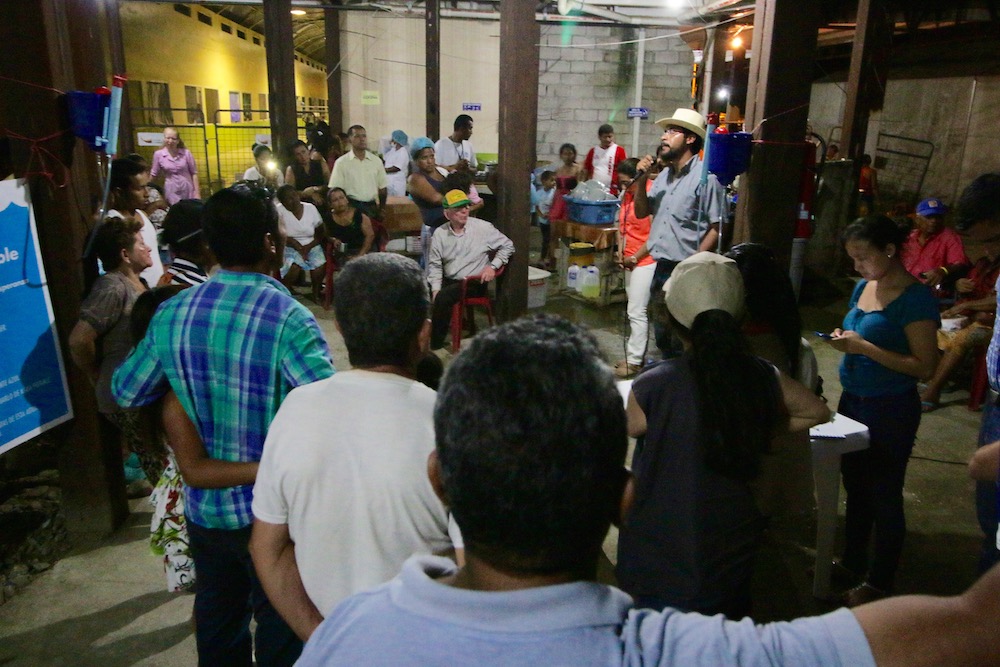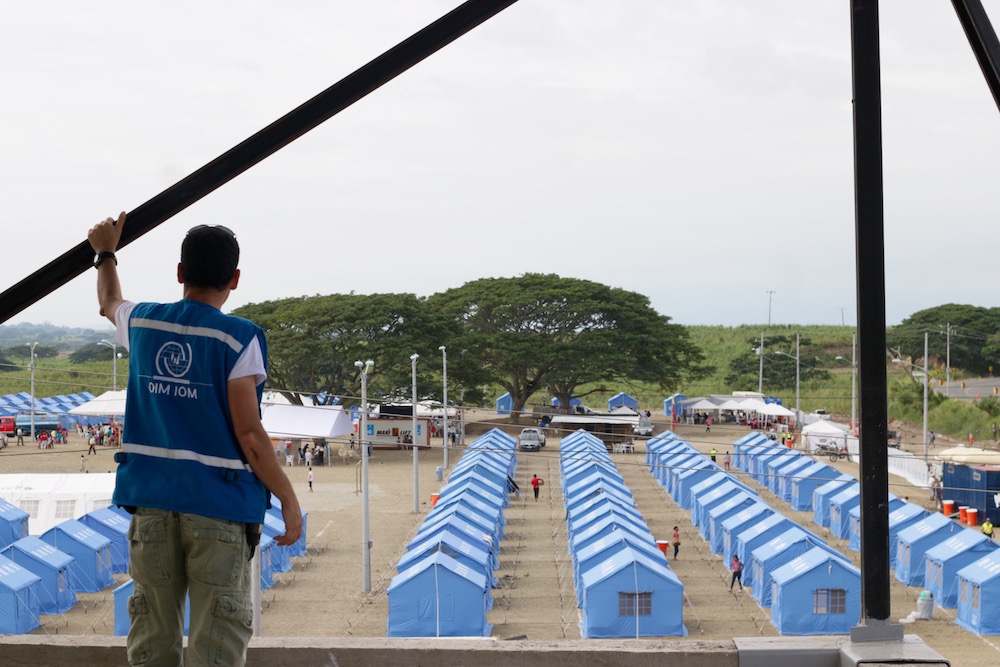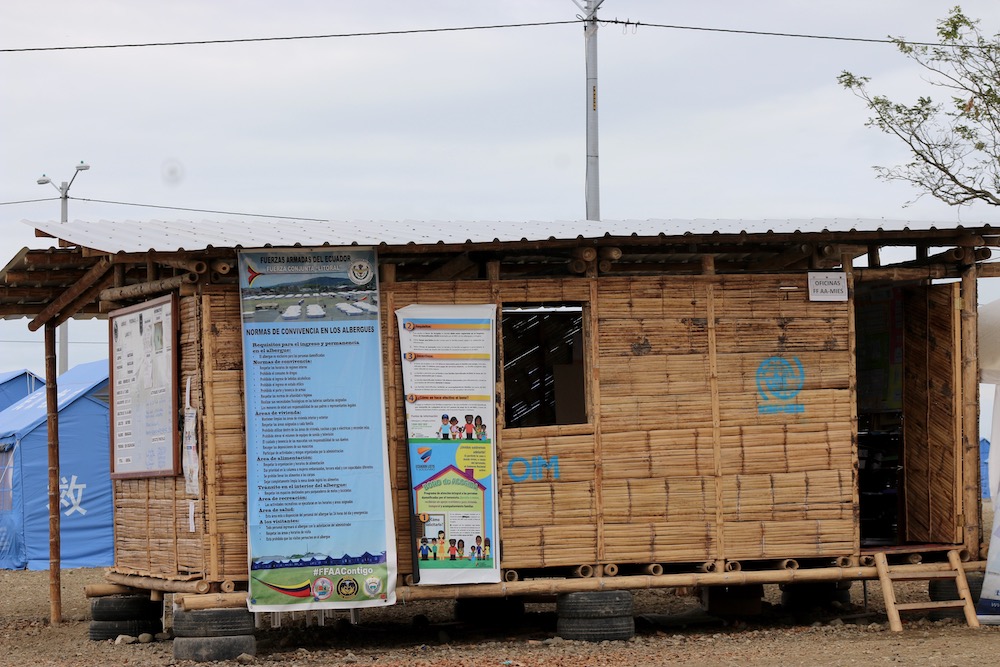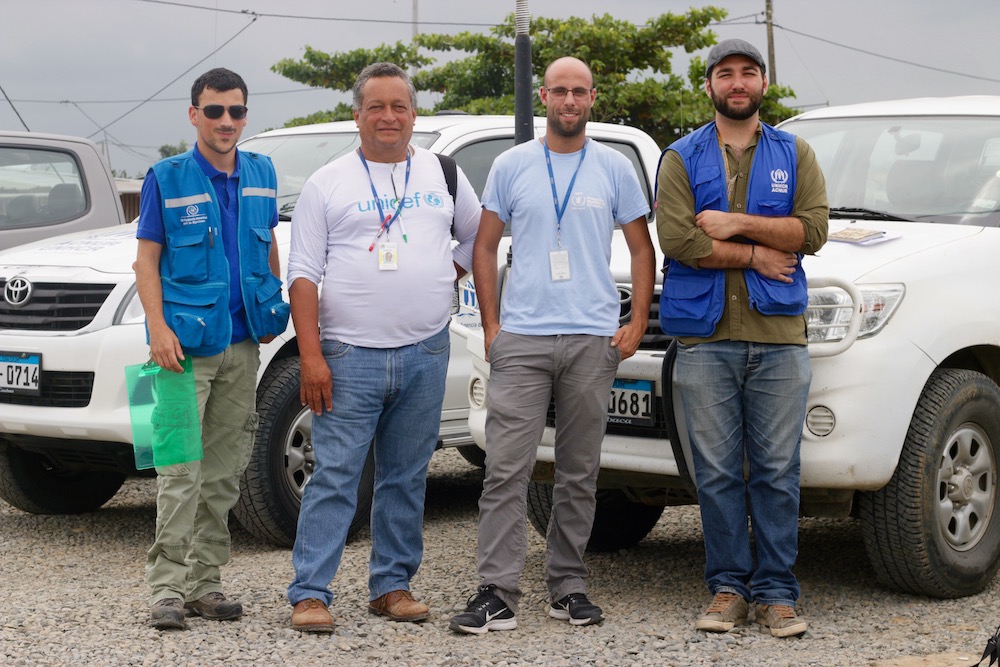A 7.8 magnitude earthquake shook the northwestern coast of Ecuador in April 2016, resulting in 663 deaths, with 12 missing persons, and 4,859 injured. An estimated 720,000 people were affected by the earthquake and were in need of humanitarian aid. Over 3,550 registered aftershocks have reverberated across the pacific coast since the initial earthquake on April 16, strongest being 6.7 and 6.8 in the Richter’s scale through April 2017, by the National Geophysical Institute. The magnitude of the seismic event and aftershocks that accompanied it resulted in one of the largest internal displacement in Ecuador’s contemporary history. The Canton of Pedernales, located in the province of Manabi, was among the hardest hit. At the height of the crisis, over 80,000 people were displaced, with the majority living in 26 official camps. The remaining people lived in informal settlements or with host families in urban and rural settings. Conditions in these displacement sites varied greatly; some having access to basic services while others, especially in rural areas, having very limited access to services. Poor sanitation conditions had increased the risks of mosquito-borne diseases such as Zika, Chikungunya, and Dengue fever, posed immediate health threats. With regards to gender and violence, national statistics show that 60.6% of Ecuadorian women have experienced some form of violence and 1 in 4 have been a survivor of sexual violence. The communities most affected by the earthquake were already in vulnerable socioeconomic situations and GBV was of critical concern even before the earthquake, with prevalence rates as high as 58% in some locations and 37% of children between the ages of 5-17 having experienced household violence. The disaster exacerbated several contributing factors to GBV, including worsening perception of security, dignity and privacy as a result of lack of adequate shelters and multiple displacements many of the affected population have undergone. Moreover, protection partners had a particular concern for at-risk children and adolescents living in informal settlements that are not in school and live in crime-prone areas. Psychosocial support is still critical for the affected population, including children.
Ecuador
ENDLINE REPORT ECUADOR
BASELINE REPORT - ECUADOR, 2016
Photo gallery of the country




































